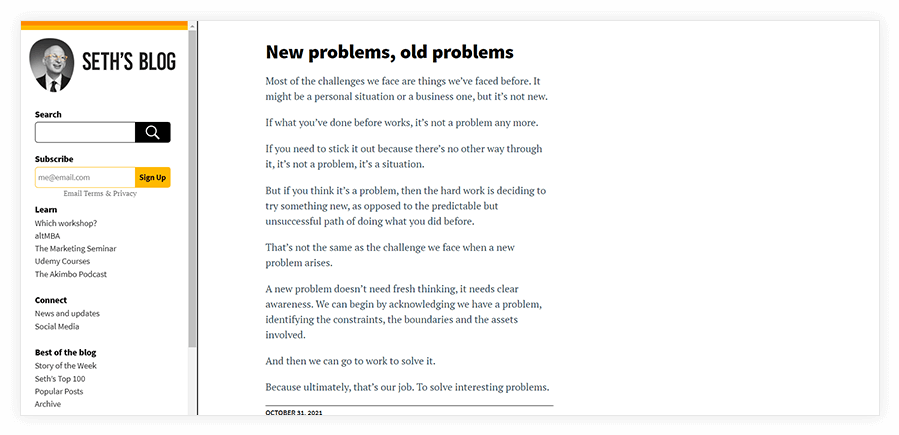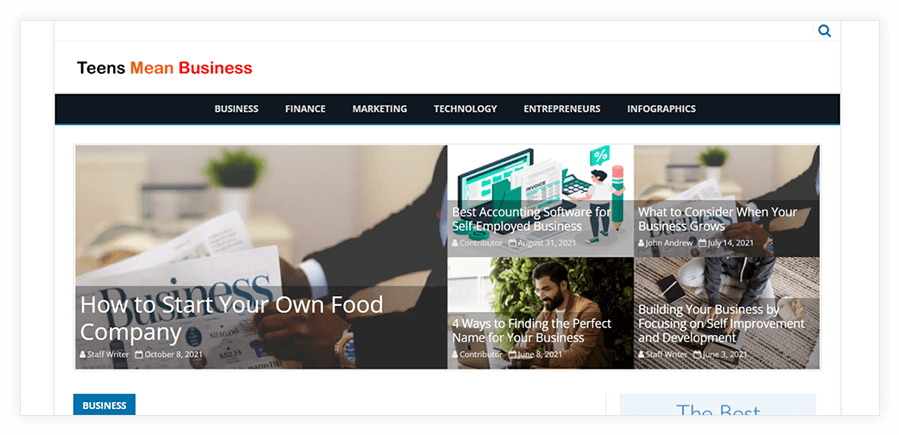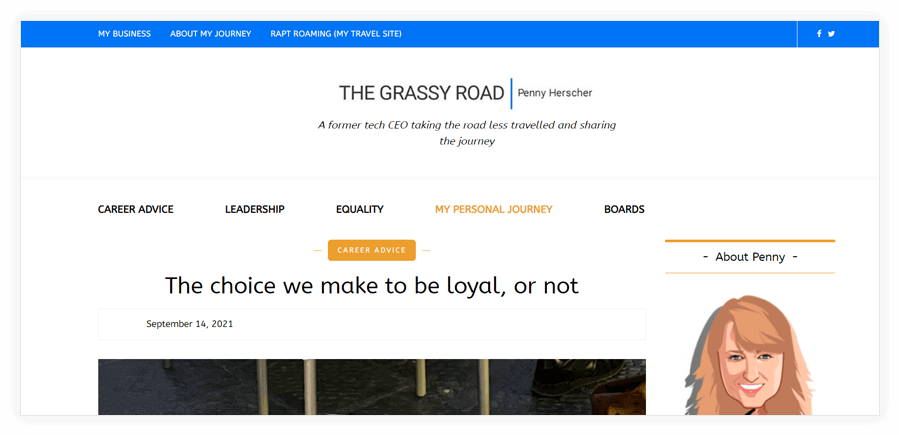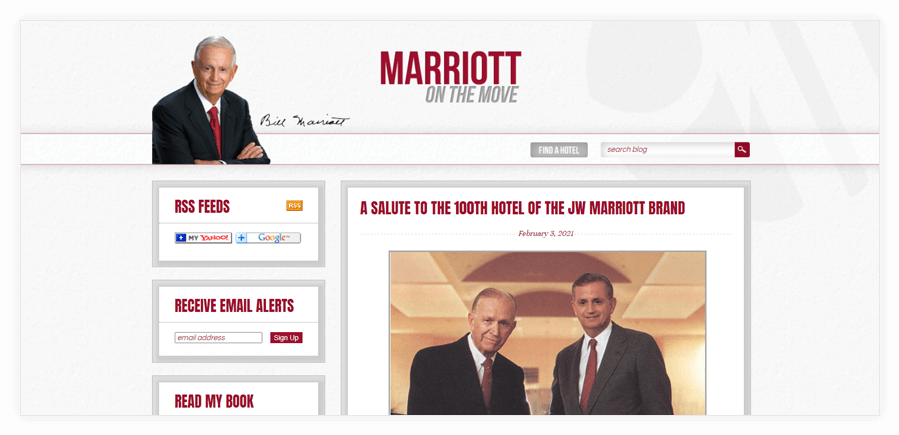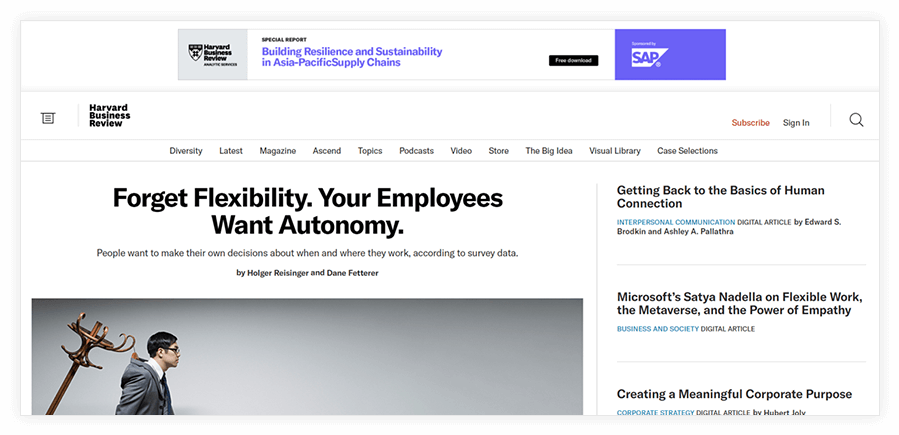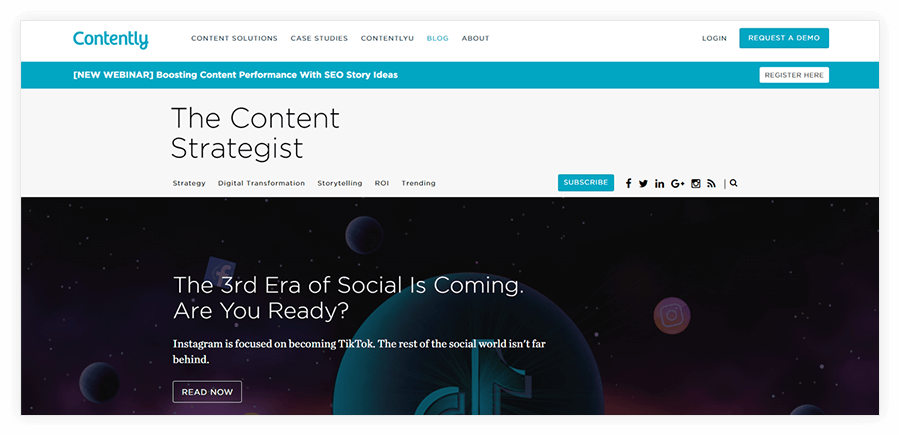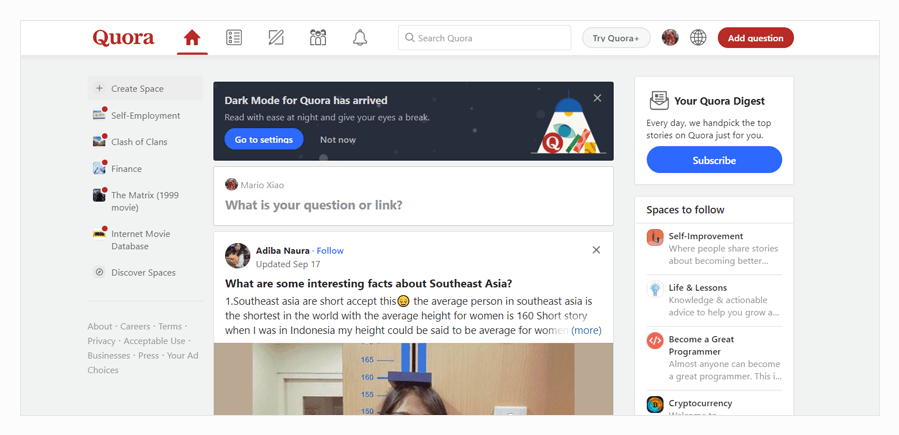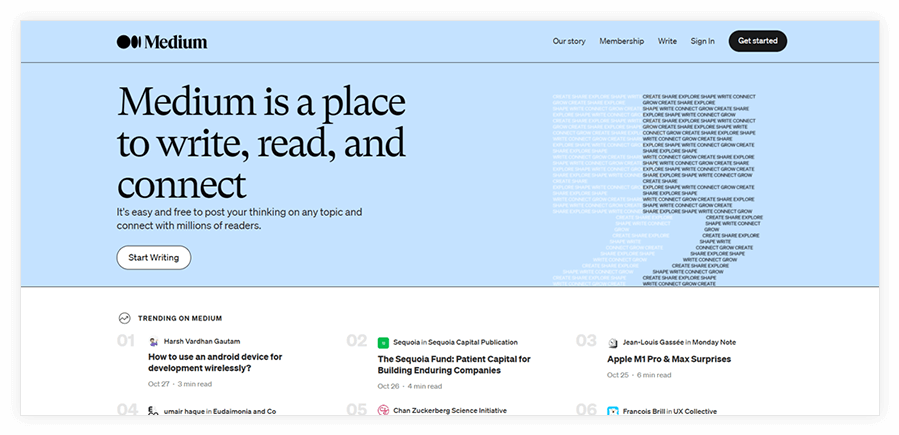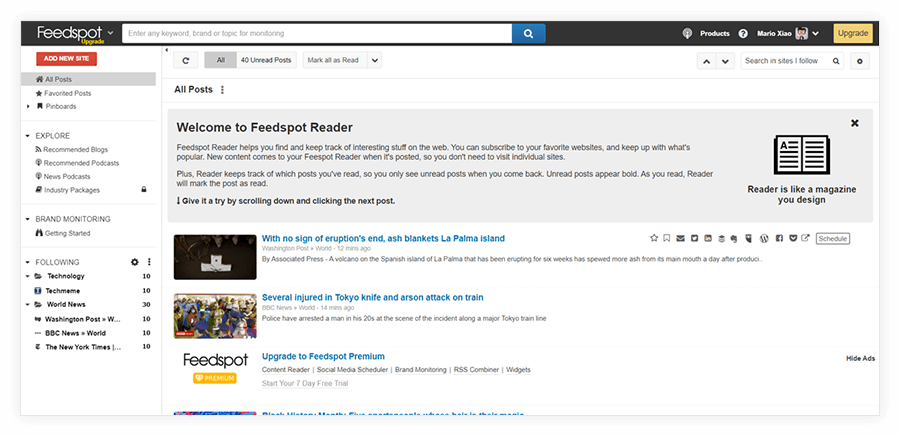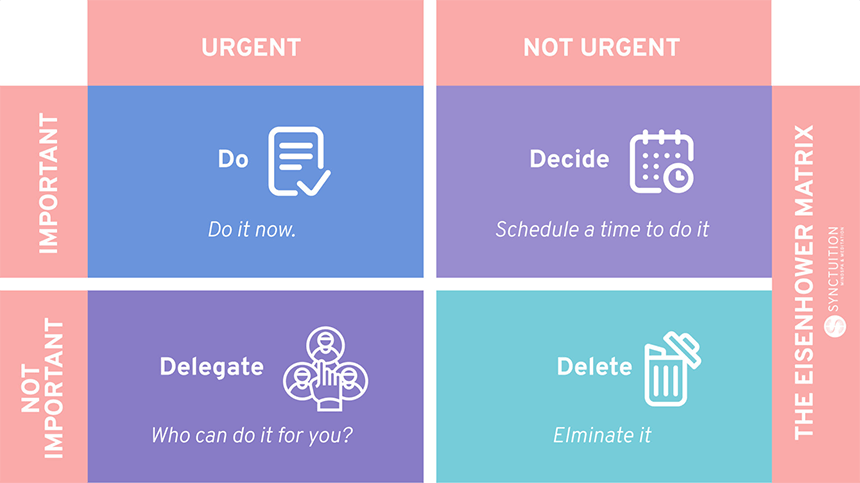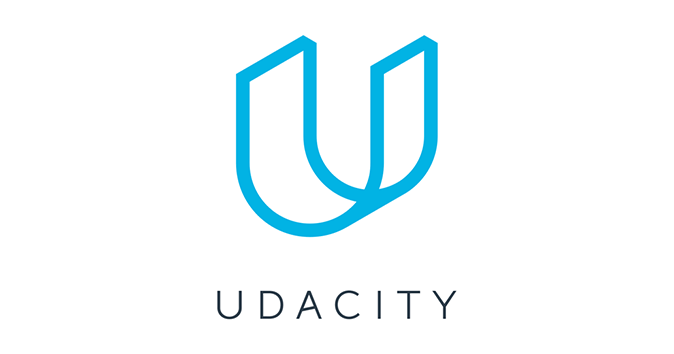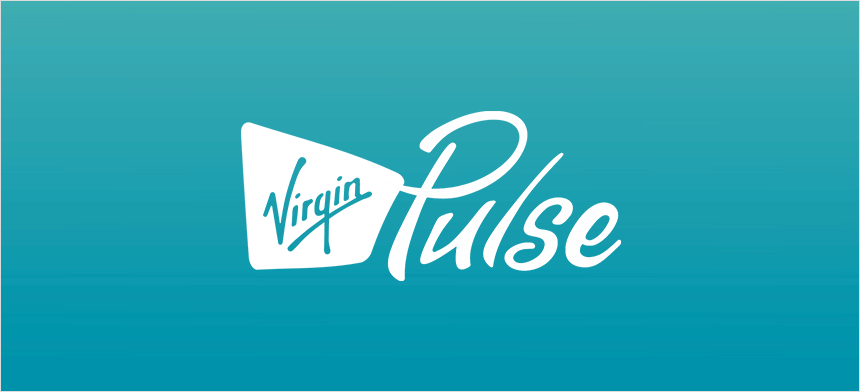Did it ever strike you as curious that Dorothy got along so well with a heartless Tin Man? Right from the start, she was enrapt—oiling him, fixing him up, attending to him. You’d almost think she was in character, putting on an act.
Come to think of it, it’s just as unlikely that a lion would ingratiate himself almost immediately with the motley trio.
Rapport, as a matter of course, generally doesn’t just happen. No, in the everyday world of teamwork and remote meetings, lions, young girls, scarecrows and tin men don’t effortlessly meld, lock arms and skip together down a yellow brick road.
Open communication, trust and esprit de corps within a team is the fruit of hard work and planning from a project manager.
Creating this rapport is the foundation for solid work relationships. It creates a culture of empathy and mutual respect. Plus, it boosts company and individual work performance from good to exceptional.
Many teams have lost the traditional framework for creating this camaraderie, as they have transitioned from in-person to remote working. Gone are the days of chatty repartee with the sports aficionados in the break room, or an impromptu coffee date with colleagues.
A massive reshuffling within the workforce has also weakened team bonds.
These changes call for leaders to double-down on their commitment to team building, and to creatively adjust traditional strategies.
Let’s look at the cornerstones of rapport, illustrate some techniques for building it, and explain how it benefits us all. Finally, we’ll get into rapport building activities, both for in-person and remote teams.

The Cornerstones of Rapport
Have you ever been really concerned about knowing the dress code for an event you were attending?
This is an effort to build rapport. We all know how jarring it feels to show up in a three piece suit to a gathering where everyone else has on t-shirts and sneakers.
What is rapport, exactly?
Rapport is about building connections with an individual or community. More than being friendly or getting on with another person, rapport seeks to break down barriers and enable fluid communication.
Forensic psychologists Laurence and Emily Alison, authors of Rapport: the Four Ways to Read People, stress that rapport is the opposite of force.
Rapport entails cooperation and acting out of freedom, while force compels action through fear, pressure, or enticement.
Statements like “eat your dinner or there won’t be any desert” from a parent don’t serve to build rapport with a child.
The Alisons have spent the past twenty years training the CIA and FBI to conduct interviews with criminals and terrorists.
Through this hands-on experience, they have discovered key approaches and techniques to facilitate open communication. They have distilled the fundamental components of rapport into four areas: honesty, empathy, autonomy, and reflection (HEAR).
Honesty
Have you ever had the experience where just after meeting someone, they say something you completely disagree with? Maybe they share a political opinion, or talk about loving a movie you absolutely loathe.
It’s hard to know how to react in such a scenario.
The honesty necessary for building rapport is like walking a tightrope. It entails not yielding your own position, while having flexibility for alternate perspectives.
Reacting with complete honesty is a bit harsh. Saying something like: “I completely disagree with you” may well shut the other person down, or create an argument. Lines of communication are lost.
Rather, the Alisons recommend softening the approach by pairing it with some empathy. Saying “I see what you’re saying. However, as I see it…” maintains honesty as well as a positive connection.
Within teams, members build rapport when they incorporate empathy into their point of view. “I know some people here don’t see it this way, but….”

Empathy
Empathy is integral to having rapport with someone. However, this quality doesn’t mean fluffy warmth or sentimental feelings.
Empathizing with another person goes beyond thinking “I know how I would feel if I were in their shoes”, to really trying to understand another person’s perspective.
This level of empathy is achieved through listening and an active imagination. It seeks to understand what really drives another person.
Teams, as we know, are made up of people from all sorts of backgrounds, ages, personalities, and previous experiences. Releasing our own perspective and deliberately listening to others in order to get where they’re coming from is key to bridging communication gaps.
Incorporating empathy into difficult messages or bad news is necessary for maintaining rapport: “I know the team feels overworked and needs a break, but this is a hard deadline we need to meet.”
Autonomy
Between these two statements, which do you think is more likely to get a four-year-old to cooperate: “Go brush your teeth” and “What would you like to do first? Put on your pajamas or brush your teeth?”
Or these two, when approaching a customer service employee: “I need you to fix this” and “What do you think you can do to fix this?”
Although each statement seeks the same end, there’s a world of difference between the approaches.
At any age, we all want to have some liberty and license as to how we go about doing things.
A work environment with lots of rigidity and protocol may well create totally unnecessary resistance from employees.
Opening someone up and creating channels for communication and cooperation means pushing the right levers. Allowing for autonomy doesn’t erase any obligations. Rather, in whatever way possible, it seeks to provide people with choices and options.
Giving people the flexibility as to what project to work on next, or when to do certain tasks, yields an obliging and cooperative team.

Reflection
Have you ever heard that what people say are the icebergs that sit above the water? To get at what they really mean requires exploring beyond surface statements.
In order to do this, the Alisons recommend a conversation technique of throwing back what a person has said. Statements like “So it sounds like what you’re saying”, “So yeah, you’re kind of feeling like…” and “Tell me what you mean by….” generally compel people to explain themselves further.
Rapport develops when a person feels they’re fully understood and listened to by another.
Making a habit of using reflection statements at meetings builds rapport, as it allows people to fully explain themselves and be understood.
Not So Easy as Pie
There’s quite a lot that goes into building rapport, as you can see. It’s much more than making friendly banter.
Fortunately, there are techniques to help facilitate an open, collaborative environment—both within teams and in our personal lives.
Eight Hacks for Building Rapport
Career counselor Susan Callender used to work up to seven days a week as the manager of a luxury hotel, completely immersed in a world of Persian rugs, velvet armchairs, and crystal chandeliers.
She found herself carrying the demeanor of a formal hotel manager outside of work, and it would turn people off. It’s no wonder—who wants to kick back and have a drink with someone who’s reserved, proper, and addresses you as “sir” or “madam?”
Rapport is deliberate engagement. In order to connect in her various environments, Callender assumed her buttoned-up persona at the hotel, then found she had to deliberately let her hair down in her day-to-day life. It requires taking on roles and playing different versions of ourselves.
It’s a skill we use anytime we interact with someone: our children, boss, coworkers, friends, and neighbors. Oftentimes we have only a small window to establish rapport, such as when we’re calling a customer service representative, talking to our mailman, or conducting interviews.
Whatever the context, the principles of rapport still apply. Here are eight techniques for building rapport in everyday interactions.
1. Speak with Body Language
You’ve probably heard that communication is 93% non-verbal.
When engaging with someone, subtly imitating their body language is a way to establish a connection. When they cross their arms, cross yours. If their legs are crossed, do likewise.

Similarly, it’s important to be mindful of where people sit or stand in relation to one another.
It feels casual to sit beside someone at a table, but more formal to sit across from them. Leaning forward in your chair, toward another, demonstrates interest and curiosity, while sitting back and taking up a lot of space communicates power.
2. Be the Host With the Most or a Gracious Guest
Rapport is a little like playing human chess. It requires reading a situation, then taking on a role.
Before going into a meeting or appointment, take some time understanding your relationship to everyone there.
Hosting entails being the director of everything that is going on. It’s necessary to be attentive, welcoming, interested, and to do things that put others at ease.
Playing the role of the guest, however, means showing up on time, being appreciative of the other person, and just generally going with the flow of whatever is happening.
Assuming an appropriate role in social encounters allows engagement to function with ease.
3. Create a Fostering Environment
How would you like to be interviewed by someone sitting across from you in a black swivel chair at an executive desk?
An environment creates or destroys rapport. In order to have someone talk candidly about themselves, it’s necessary to do things like graciously welcome them into the room, show them to the nicest chair, and ask about their day.
4. Modulate Voice Tone
We all know to change the tone of our voice when talking to a three-year-old.
However, tone alteration isn’t so intuitive in many other interactions. It may not occur to a manger, who’s accustomed to speaking decisively with employees, to alter his or her tone when the dynamic shifts.
However, this same tone of authority may not get them very far when asking to be upgraded to first class, or conducting an interview. A more diminutive tone is appropriate to these situations.
Voice inflection is also important to consider when communicating. Raising your voice slightly at the end of a sentence indicates enthusiasm, whereas ending in a monotone indicates a lack of interest.
5. Find Common Ground
When you have something in common with someone, it’s easy to chat away with them for hours.
Establishing rapport in relationships and within teams can be as simple as discovering similar experiences, interests, and pastimes.

6. Break Down Thin-Slicing
Sometimes we have just a small window to establish rapport and make the most of a situation.
In his book Blink, Malcom Gladwell introduces a concept he calls “thin-slicing”, which has to do with split second assumptions we make about each other that are based entirely on past experience.
Overcoming false impressions and establishing rapport entails immediately presenting the story of who we are and how we want to be seen.
Imagine a scenario where a woman is presenting to a group of people twice her age. In order to break down any assumptions they may have about her capabilities, she can immediately start with an anecdote that demonstrates her proficiency and knowledge with the subject at hand.
7. Be Agreeable
When you have only a few minutes to build rapport, making a conscious effort to be agreeable goes a long way.
If someone says they love tacos, go with it, even if you don’t. Mention the taco stand down the street, and your memories of eating tacos at tailgate parties in college. Congeniality generates a positive tone that allows conversation to flow.
8. Adjust the Thermostat
Have you ever been so cold you had to turn up the thermostat, and then 45 minutes later you were taking off your sweater?
Rapport develops through a variety of factors, all of which can be adjusted.
Building a friendly, open relationship requires constantly reading the temperature of a room and making tiny adjustments, if necessary.
If you sense that someone is intimidated at a meeting, try lowering your chair. If you’ve overdressed for the occasion, take off your coat and roll up your sleeves. If you’re sensing resistance from team members, offer them flexibility on a deadline.
Practice Makes Perfect
Of course sitting in the wrong chair at a meeting isn’t going to make or break an interaction.
However, fine tuning many details in concert creates an environment where enthusiasm builds, people feel heard, and communication flows.
Achieving this end can be exhausting. Rapport is a soft skill that’s no cinch to master.
But it’s well worth it, as the benefits play out both in our careers and personal lives as well.

Who Benefits from Rapport?
Teams with great rapport aren’t just having a lot of fun. Although there’s plenty of that to go around.
Here are the top reasons having a united team and strong rapport skills means a win—both for you personally and your team.
A Team With Drive
A study from the University of Florida found that teams who regularly engage in rapport building activities are more productive than those that don’t.
Teams with solidarity are more likely to think outside of the box, and innovation increases. Sales and revenue goals are more easily met. Not a bad outcome, that.
Company Culture Flourishes
Company culture includes all the norms around the office–behaviors that are implicit but never stated outright. These unwritten rules affect how we relate to coworkers, clients, and conduct our everyday work.
A team who’s built strong rapport naturally is full of empathy and enthusiasm. Habits of active listening, connecting, and supporting each other improve the everyday vibe of the office. People enjoy coming to work and being part of the team.
Recruits Jibe With the Team
People with strong rapport skills know how to conduct a fruitful interview, where a prospective employee candidly shares his or her experiences, work habits, values and goals.
Teams successfully identify candidates who align to the company’s core values and fit with the work ethic of the team.
The Influencer
Someone who’s good at building rapport has an easier time finding consensus from a team, and can effectively sway others to his or her vision.

Windfalls Abound
Rapport is about the long-game. When you’ve set up a practice of being empathetic and establishing strong ties with people, they’ll do you a good turn when you need it.
A Resume Skill
Your professional reputation, in large part, is the amount of social capital you amass–that is, the strength of the relationships you establish along the way.
When businesses look to promote or hire, they want someone who interacts well with others. Rapport is a soft skill that employers prize in prospective employees.
Bonds of Steel
When you know how to be empathetic and develop lines of communication, all of your relationships benefit.
Rapport skills improve interactions with your teenager, your spouse, and help you persuade your stylist to squeeze you into her busy schedule.
People Like You!
Last but certainly not least, anyone with strong rapport skills can gleefully squeal in unison with Sally Fields, “And I can’t deny the fact that you LIKE me!”
How could anyone not, when you’re habitually warm, attentive, and listen well?
A Bonafide Edge
As you can see, rapport not only improves a work environment, but is a life skill that lubricates all the relationships in our lives.
Now let’s get to the heart of the matter and look at activities for building rapport.
15 Virtual Rapport Building Activities
Virtual teams present a challenge to leaders. Gone are the days of water cooler banter and having a tête-à-tête with a colleague beside their desk. Creating cohesion and rapport requires thinking outside of the box.
Many of these activities seek to recreate the office environment. Others increase empathy between teammates, while many are simply about having fun!
Before the Meeting
The first five minutes of each meeting is usually spent waiting for everyone to show up, so why not use it for a little team building? Each of these activities takes five or ten minutes.
1. Word Scramble
Purpose: Fun
Time: 5 minutes
Frequency: Recurring
Tools: Word Around Cards, video conference platform

Word Around Cards look like a bull’s eye, and inside each ring is a scrambled word. The words increase in difficulty with each outer circle.
The leader scans images of the cards beforehand, then presents them to the team, one by one. People either call out the answers, or enter them into chat.
One variation on this game is holiday-themed word scrambles. Just write scrambled words like “pumpkin” and “headless horseman” onto blank index cards, then scan them.
2. “I spy” With the Background
Purpose: Fun
Time: 5 minutes
Frequency: Recurring
Tools: Video conference platform
This game allows the team to have fun with each other’s background. One person names a characteristic of something he or she sees in another’s video background without saying what it is: “I spy something that is green”, “reminds me of my childhood” or “smells like a rose.”
The other team members take turns guessing what it is. Everyone takes a turn being “it.”

3. Learn a Foreign Word
Purpose: Fun
Time: 5 minutes
Frequency: Recurring
Tools: Video conference platform
This is a great activity for international teams. One designated participant teaches a word from their mother tongue to everyone else. Slang or holiday-themed words make fun selections.
4. Pre-Meeting Chat
Purpose: Fun
Time: 5-10 minutes
Frequency: Recurring
Tools: Video conference platform
Simply designating the ten minutes before or after each meeting as a chat window allows members to catch up on one another’s lives.
When done regularly, it becomes routine and people habitually join in.
5. Trivia!
Purpose: Fun
Time: 10 minutes
Frequency: Recurring
Tools: Video conference platform and trivia questions
Who doesn’t like a good game of trivia? Asking questions on current events from the past week keeps everyone on their toes.
Answers can be shouted out or put into chat boxes.

6. Cribs
Purpose: Fun
Time: 15 minutes
Frequency: Recurring
Tools: Video conference platform
Working remotely allows team members a glimpse into the “real” you.
At the beginning of a call, the leader asks one member to sign on with their phone, and provide the rest of the team with a selective tour of their domicile.
It’s on the participant to choose what to reveal.
This activity is an opportunity to show off the family’s refrigerator art, a collectible, or an heirloom they’re proud of.
The team gets a peek into the lives of their coworkers that they’d never get to have in the office—and probably discovers things they have in common, such as a passion for cooking or an LP record collection.
Getting to Know the Team
With an increase in resignations and subsequent onboarding, it’s important to facilitate opportunities for team members to get to know everyone they’re working with.
7. Manuel to Working With Me
Purpose: Get to know me
Time: 60 minutes
Frequency: Once
Tools: Video conference platform and Google docs
Working remotely makes it impossible to understand each other’s working habits like we could at the office. In this project, participants share their work personalities and set the stage for trust and teamwork.
For the first 30 minutes, participants answer questions related to their working style, preferences, and habits. Some questions might be:
- What is the best way to work with me? (collaborative, extroverted)
- What do I believe?
- What am I working on? (speaking up at meetings, speaking less at meetings)
- Fun personal information such as “favorite season” or “favorite smell.
The leader answers additional questions such as:
- As a leader, what is your leadership style?
- What do you expect from your team?
The team shares their answers during the second half of the hour. The files can be saved in an archive as an onboarding tool for new employees.
8. Weekly AMA
Purpose: Fun, get to know me
Time: Asynchronous
Frequency: Recurring
Tools: Favorite messaging app
This is a fun way to get to know team members. On Monday, the leader posts a brief bio of someone on the team, including where they’ve travelled, a favorite sports team, and their hometown.
Team members over the week get to dive in and ask this person whatever they want.
Engagement is everything in this activity–it’s about asking good questions!
Questions like “What’s most surprised you?” and “What’s your first memory from childhood?” can spark intriguing, revealing answers.
It’s amazing what you learn about team members from this activity.

9. Personality Test
Purpose: Get to know me
Time: 60 minutes to take the test (asynchronous), 60 minutes to discuss it
Frequency: Once
Tools: Video conference platform and a personality test
Who doesn’t benefit from a little more self-knowledge? On their own time, everyone takes a personality test. A few options include 16Personalities,
CliftonStrengths Assessment, and Meyers-Briggs.
At a scheduled time, everyone shares and discusses the results.
This is a step-up from the Manual to Working With Me activity. The purpose is to gain empathy and insight into each other.
In-Person Office Simulation
Virtual teams have none of the opportunities to build camaraderie an in-person office offers: coffee, lunch, and repartee in the break room.
These activities seek to re-create the office environment, and so build some of the same cohesion.
10. Virtual Break Room
Purpose: Spend casual time with team members
Time: Real time
Frequency: Recurring
Tools: Video conference platform
We all need to step away from the desk from time to time and shoot the breeze with whoever happens to be around.
This activity seeks to create the spontaneous break room environment. It consists of an open room on the conference platform that anyone can join at any time. All topics are open for discussion, so long as they’re not work-related.
This won’t feel natural at first. When the leader models and uses it deliberately, it becomes a part of the work day.
Another way to simulate the break room is through group chat. Topics can be set for each day, such as “humble brag” or “animal photos.”
The purpose is to get some fun, non-work related conversations going within the team.

11. Live Remote Co-working
Purpose: Re-create the office environment
Time: The entire day or a 2-3 hour window
Frequency: Recurring
Tools: Video conference platform
This activity seeks to create a communal, everyday work environment. The team works just as they normally would in their home office, but with the video playing.
People have casual conversations as they work, and are motivated by working together.
To shake off any initial awkwardness, the leader can start with an ice breaker and emphasize that no one is being supervised. Everyone is free to step away from the computer when they want and work as they normally do.
Depending on the preference of the team, this activity can be for the entire day, or just a part of it.
12. Communicate Using Video
Purpose: Speak to people, rather than message
Time: Asynchronous
Frequency: Recurring
Tools: Volley or another asynchronous video-messaging app

So much is lost when team members only communicate via email and messages during the day. Tone, voice inflection, and non-verbal communications don’t come across.
This is an activity, or more of a daily practice really, of sending short videos to coworkers in lieu of messages.
A video brings the interaction to the level of a conversation. People recognize facial cues, and more meaningful communication takes place.
Sheer Enjoyment
Here are some virtual activities that are just about having a good time with each other.
13. Theme Days
Purpose: Fun
Time: Duration of video meeting
Frequency: Recurring
Tools: Video conference platform, Snap Camera app
This is a great activity to have on a weekly or monthly basis. Themes can be chosen around a season or holiday, or anything else. Some ideas include crazy-shirt day, tie day, or Halloween.
Members can either wear an actual t-shirt or tie, or conduct the activity using video filters. (Using video filters simply entails downloading the Snap Camera app, which makes all the filters from Snapchat available on the video conference platform.)
It adds a very fun element to a meeting when you’re talking to Anna from Frozen, the Headless Horseman, or a Pumpkin.
14. Name the Masterpiece
Purpose: Fun
Time: 10 minutes
Frequency: Recurring
Tools: Video conference app, pencil and paper
This is a fun Friday unwind activity that flexes the inner artist in team members!
With a pencil and a sheet of white paper, members re-create various masterpieces, such as the Mona Lisa, Girl With a Pearl Earring, or Christina’s World.
Everyone takes turns holding their “masterpiece” up to the camera and members guess what it represents.
15. Series Night!
Purpose: Fun
Time: 1-2 hours
Frequency: Recurring weekly
Tools: Streaming platform, video messaging app
Watching a series allows members to unwind and spend down time together on a recurring basis.
The team selects a series from a streaming platform, then watches it together at a regular time, such as Wednesday evenings. While watching, everyone interacts with each other on a video messaging app such as Volley. Optionally, the activity ends with a group chat or a video call.
Bake-offs and other challenges make good series selections: the first week everyone bets on who will win, and the suspension and momentum builds throughout the season.
It’s Virtually the Same
Even in the remote world, team building is still about creating spaces that generate trust and enable vulnerability.
It takes some time finding activities that work with your team, but with diligence, things catch on and become routine.

In-Person Rapport Building Activities
Most of these activities are fun icebreakers, while others focus on developing the techniques for building rapport.
A few can be done remotely as well, but most need to be in-person.
Openers
These activities make a great way to break the ice and build some rapport amongst people who don’t know each other.
1. Finding Common Ground
Purpose: Fun, identify things in common
Time: 5-10 minutes
Tools: Ubuntu Cards
Participants: 6-20
The leader passes out an Ubuntu card to everyone. The backside of an Ubuntu card has 8 small images of everyday items (hammers, calculators, dice), several of which match to other cards.
Participants find someone with a matching image, and the pair discovers one thing they have in common. In order to stimulate conversation, anything visible to the eye (e.g. both are wearing blue) doesn’t count.
The pair trade cards, then everyone finds a new partner. Repeat for 2-3 rounds.
Ubuntu (or “I am because we are”) cards make a good investment, as they provide a wealth of games to play. Here’s another:
2. Share Stories Through Image
Purpose: Break the ice, get to know each other
Time: 10 minutes
Tools: Ubuntu Cards
Participants: 5-20

The front side of an Ubuntu card has a single image. The leader lays the cards out near the entrance, face-side up. As people come in, they find an image that sparks a good memory or reminds them of an uplifting story from their past.
When everyone has arrived, participants find someone with a matching image, and they share their stories. With a smaller group, the stories can be shared all together.
This activity creates some strong connections from the get-go. It can be repeated in the same format using a different question, such as “Share how you’re feeling about the project.”
3. Name Scrabble
Purpose: Fun, to appreciate collaborative learning
Time: 10-15 minutes
Tools: Blank 4×6 index cards, cut in half
Participants: 5-20
Separate participants into groups of 4-6, and have everyone fill out a card for each letter in their first name.
The cards are pooled, and together the team plays Scrabble with the letters, creating words from top to bottom and left to right.
After using all the letters they can, each person looks to see where their name fits into the arrangement. It’s a metaphor for how we all blend our skills to work together.
4. Conversation Starter Buttons
Purpose: Fun, break the ice
Time: 5 minutes
Tools: Labeled pin-back buttons
Participants: 5 or more
The leader lays out an assortment of conversation starter buttons at the entrance to the meeting, and participants pin one to their shirts as they arrive.
During the first five minutes, members turn to their neighbors and discuss whatever the buttons bring to mind. The buttons include phrases such as “no whining,” “ungoogleable,” and “we can do it.”
Be sure to collect your buttons at the end to use on the next go-around.
5. Crayon Color-Label Game
Purpose: Fun
Time: 10 minutes
Tools: Box of crayons
Participants: 5-10
Each player receives a crayon, and immediately covers the manufacturer-given color with their finger (e.g. “maize” or “brick red.”) Next, they determine what they think the name of the color should be.
Everyone lines up alphabetically according to the name they’ve determined for the crayon, and then uncovers the manufacturer’s label.
In the debriefing, players discuss the difference between the name they chose and the manufacturer’s label. This is a way to create discussion around common misconceptions with labeling.
Rapport Technique Games
These activities develop techniques for building rapport.
6. Reflection Question
Purpose: Develop rapport reflection skills
Time: 5-10 minutes
Tools: Slips of paper and a jar
Participants: 6-10

Everyone writes a question onto a slip of paper, then drops it into a jar.
Participants divide into pairs, and each picks a question from the jar.
Pairs take turns answering each other’s question. Rather than simply accepting the answer at face value, the interviewer digs deeper by throwing back some of the response: “Tell me more about….” and “What is it about…..”
The question can add a level of hilarity to the conversation. Here are a few suggestions:
- If you could choose one superpower, what would it be?
- If you could be a fictional character for a day, which would you choose?
- What car did you learn to drive on?
- Coffee, tea or soda?
- On a restaurant menu, which section do you look at first?
This activity develops reflection skills, one of the cornerstones of rapport.
7. Mirror, Mirror
Purpose: Develop rapport body language skills
Time: 10 minutes
Tools: None
Participants: 5-10 (two role play)
In this activity, two participants get to flex their improv skills. One participant is the leader and the other a follower. For the first few minutes, the follower mirrors all the movements of the leader.
In the second round, there is no leader, and the pair move in synchronicity.
This activity shows that it’s possible to match anyone in style and personality. It’s not about losing your own style, but building rapport with the other person.
8. Tone Matching
Purpose: Learn to adjust voice tone in various contexts
Time: 10 minutes
Tools: Index cards with phrases and questions (see below)
Participants: 5-10
One participant is given a simple phrase on an index card, such as “What did you have for lunch today?” or “What are your plans for the weekend?”
Then they’re given a stack of cards, face down, with various relationships, such as “interviewee,” “child, scolding,” “Child, comforting,” “boss,” “client,” “friend,” and “stranger.”
They pick a card, then speak the phrase as though talking to whomever is on the card. The other members guess who they’re talking to.
This activity demonstrates that it’s important to vary tone depending on who we’re speaking with. For example, we use a very different tone when addressing a boss than addressing a child.
9. Voice Inflection Exercise
Purpose: Listening for how voice inflection changes meaning
Time: 10 minutes
Tools: Index cards with phrases and emotions
Participants: 5-10
This is similar to the tone exercise, but it exercises voice inflection skills.
Participants are divided into groups of two, and are given two index cards, one with the phrase “I didn’t even hear what you were saying” and the other “Why would I listen to your conversation?”
Each speaks the phrase four times, using different emotions: anger, sadness, surprise, and worry. The other guesses which emotion is conveyed.
This exercise demonstrates how voice inflection can completely alter the meaning of words.
10. Exercise the Demon
Purpose: Fun, silencing the self-critic
Time: 15 Minutes
Tools: White board, markers
Participants: 3-5
This is a great pre-project exercise to get your creative synapses firing.
The leader chooses a topic to brainstorm, and the participants write the worst ideas they can think of. First prize and honorable mentions go to the very worst.
This activity is good for some laughs, and is also a great way to launch into a creative project. When the self-critic is purged, creative juices flow.
Spark Engagement
Oftentimes teams only need a little push to start connecting. Trial and error with your team is one way to gauge which activities build rapport and connection within the base.

In One Accord
Not to sound too dopey, but any team that marches in lockstep, is rarely grumpy, and whistles while they work is going to make any project manager more than happy. She’d almost have to prick herself to make sure she wasn’t caught up in a fairy tale.
But the fruits of rapport are no fantasy. Strong rapport means a culture imbued with empathy and trust, where everyone is appreciated for who they are. It improves the internal and external communications of a team.
What are you seeking to improve or develop within your team?
Rapport is a process. It takes time to build a company culture of enthusiasm and cohesion.
Although everyone’s contribution is critical, the leader’s dedication to consistent practices brings about a camaraderie where members may well find themselves interlocking arms and skipping off into the sunset.

![]()









































